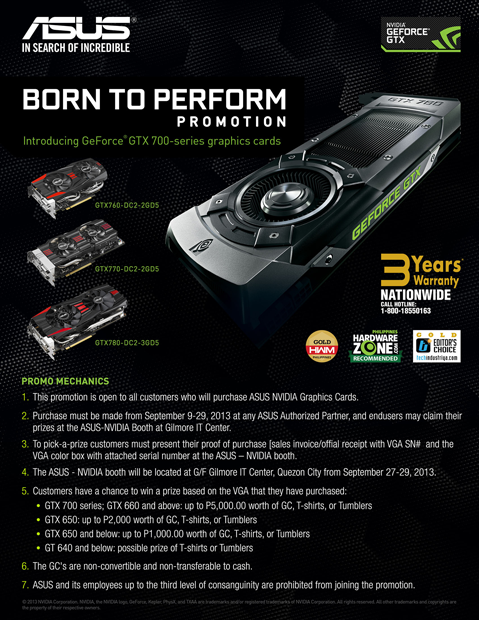NVIDIA has announced the availability of the GTX 680 desktop graphics card, which is the company first 28nm Kepler architecture graphics card that boasts of 40 % performance improvement compared to previous models but with lower power consumption.
The new graphics card illustrates exceptional gaming performance per watt, according to NVIDIA country manager Glenn Paul Serrano as the GT 680’s consumption of power is lower by 30 % compared to previous cards .
Features of the Kepler GTX 680 include support for four displays or multi screens, seven frames rendering, 3D vision surround, GPU Boost (which maximizes clock speeds based on workload), 8x MSAA (tesalation quality), and improved PhysX rendering (PhysX is an application or API to make objects act real onscreen).
Shader model capability also improved as the GTX 680 features 192 cores in one die or a total of 1536 cores and 8 control logic. Performance per watt is 2x or the card just consumes 195 watts. It is also the first graphics card designed for quiet gaming, delivering a noise output of only 46 dBA.
NVIDIA is known for inventing the GPU or graphics processing unit, which made possible the coming of improved graphics performance of PCs or desktops, allowing artists and game developers to create almost real environment for games and movies. Similar to the development of the CPU, GPU is also in the process of getting smaller and featuring more cores, providing it with capability of multi- and higher processes.
NVIDIA is also into the creation of supercomputers powered by its TESLA technology. It is also invading the mobile computing space with the introduction of TEGRA processors, which is currently inside many tablets and smartphones today.
According to Paul Lui, NVIDIA’s channel marketing director for APAC, desktops will further grow alongside the growth of graphics cards. What’s pushing the demand for desktops, he says, are the screens or displays that are getting bigger and better. Graphics performance demands in the future will be greater as future displays will also feature higher resolution capability, he says.
“When people are starting to you use more tablet devices, eventually the other screen at home would be a desktop. For mobility you go for a tablet. For visual experience you go for a nice big screen desktop and that’s what we call optimization.”
“There’s no limit on the expectation and demands for visual experience. You want better screen better graphics, larger screen–that drives the growth of the GPU. Which is why in the last 10 years the performance growth of the GPU is higher than that of the CPU.”










